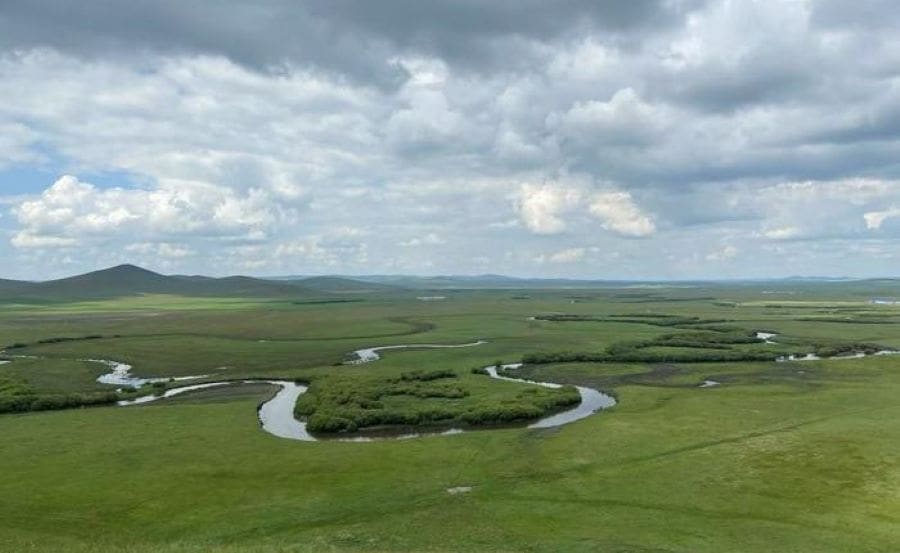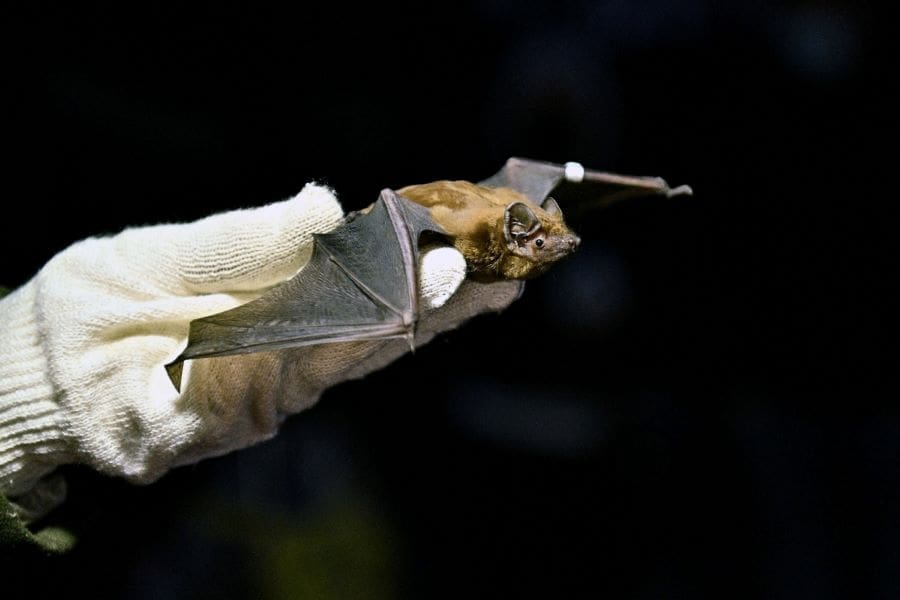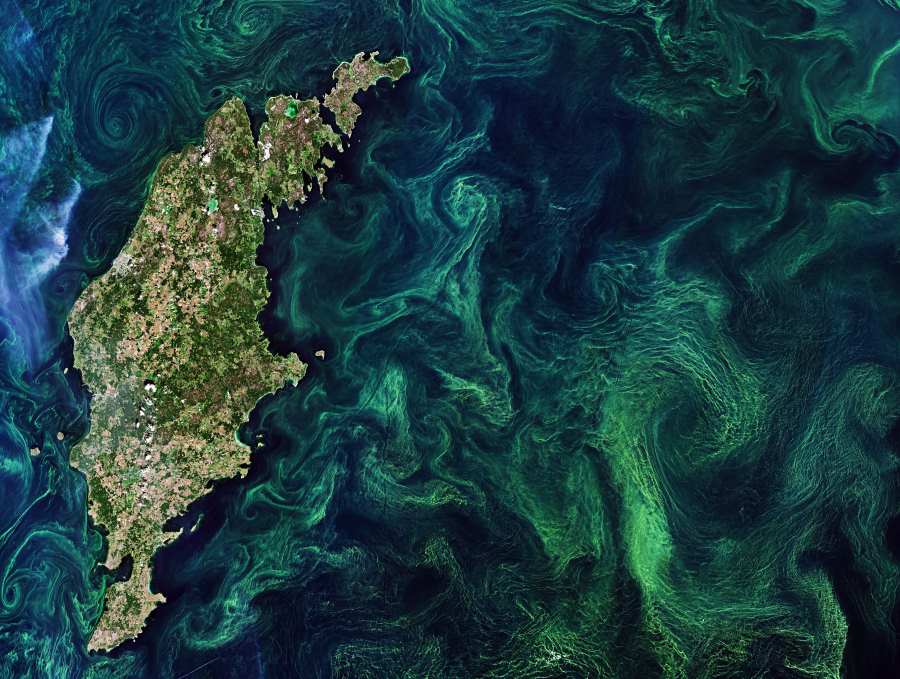Explore the latest insights from top science journals in the Muser Press daily roundup (May 6, 2025), featuring impactful research on climate change challenges.
In brief:
Vegetation changes accelerated climate shifts during the late Miocene, study finds
During this time, Earth’s climate shifted from the warm conditions of the middle Miocene to conditions closer to what we experience today, turning forests into grasslands and forcing animals like horses and elephants to evolve tougher teeth for eating gritty plants. At the same time, predators like big cats adapted to hunting in open plains, reshaping life on land forever.

So what caused this major climate shift?
Previous studies pointed to falling carbon dioxide (CO2) levels and tectonic movements as the main drivers of these changes. However, these factors alone couldn’t fully explain the global climate transition. Now, a study led by Professor Ran Zhang from the Institute of Atmospheric Physics, Chinese Academy of Sciences, highlights how vegetation feedbacks — changes in plant cover that influence climate — intensified cooling in the northern high latitudes and altered rainfall patterns in lower latitudes.
The findings, published in Science Advances, show that vegetation changes amplified cooling by altering surface reflectivity (albedo) and interacting with water vapor, clouds, and sea ice. These effects were even stronger than those caused by CO2 decline alone in some regions.
By combining geological data and climate models, the study clarifies the distinct roles of CO2, tectonic changes, and vegetation feedbacks in shaping the late Miocene climate.
“This research helps us better understand the mechanisms behind the late Miocene climate shift and underscores how vegetation feedbacks can influence global climate — both in the past and in the future,” said Professor Zhang.
Unlike today’s rapid, CO2-driven warming, the Late Miocene was marked by cooling and CO2 decline. The study highlights the often-overlooked impact of plant life on climate systems, offering insights for both historical and future climate change research.
Journal Reference:
Ran Zhang et al., ‘Vegetation feedbacks accelerated the late Miocene climate transition’, Science Advances 11, eads4268 (2025). DOI: 10.1126/sciadv.ads4268
Article Source:
Press Release/Material by Institute of Atmospheric Physics (IAP) | Chinese Academy of Sciences (CAS)
Shorter and warmer winters may expand the hibernation area of bats in Europe
The ambient temperature has a profound impact on the physiology and behaviour of most species. In regions where individuals rely on low temperatures to hibernate effectively, global warming is likely to significantly affect their survival. A team of scientists studied how ambient temperatures shape the energy expenditure of common noctule bats and built a model to predict at which latitudes they could survive hibernation.
This model also predicts how the hibernation areas of these bats could change over time. It accurately tracks the northward range shift of this species over the past 50 years and shows a further northeast expansion of up to 14 percent of its current range by 2100 – driven by shorter and warmer winters in Europe.
The study was carried out at the Leibniz Institute for Zoo and Wildlife Research (Leibniz-IZW) by a team of scientists from the Departments of Evolutionary Ecology and Evolutionary Genetics. First author Dr Kseniia Kravchenko, now is a postdoc at the University of Luxembourg, and senior author Dr Shannon Currie, now a lecturer at the University of Melbourne. The paper is published in the scientific journal Ecology Letters.

Energy expenditure is closely linked to ambient temperature. When conditions become unfavourable, many mammals such as bats, hibernate to save energy. “Hibernators tend to be overlooked in biophysical models because they switch between two physiological states during hibernation, making modelling more difficult,” explains Shannon Currie. “So, it’s still unclear how climate change will impact these species.” To investigate how this essential life-history trait affect their survival in warmer winters, Kseniia Kravchenko and her colleagues conducted two experiments.
“We assessed how much time common noctules, which are bats weighing around 30 grams, spent in torpor – the physiological state animals enter during hibernation – at different ambient temperatures. To detect torpor, we measured the skin temperature because individuals lower their body temperature to save energy,“ Kravchenko explains. In a second experiment, the scientists measured CO2 production as a proxy of the bats‘ energy expenditure under different ambient temperatures.
Models accurately reproduces historical shift of hibernation areas
The results were combined with daily temperature forecasts produced by the Potsdam Institute for Climate Impact Research, under different climate change scenarios. This way, the scientists could calculate the energy budget required to survive winter for more than 12,000 locations spread over whole Europe. They compared energy budgets using historical data (1901-2019) as well as under future projections (2019-2100) of four different scenarios of climate change.
“Our computations for current temperature data produced a hibernation area which closely matches the actual wintering distribution. This was reassuring given that the model turned to be accurate based on ambient temperature and physiological parameters only. We were also happy because, after all the experimental work and the programming efforts we put in, it showed that our approach actually worked,” says Dr Alexandre Courtiol, scientist and modelling expert at the Leibniz-IZW. “Further computations showed that the hibernation area shifted towards the northeast of Europe between 1901 and 2018, thereby expanding by 6.3 percent in its original size.”
Hibernation areas are expected to shift and expand further north- and eastwards

Feeding the model with different projections of future climate scenarios reveals that both the southern and the northern limits of the potential hibernation area shift further northwards – the southern limit even more so than the northern limit. Since 1901, the suitable wintering grounds have already moved about 260 kilometres northward.
“The current spread towards the northeast is predicted to continue by about 80 kilometres averaged across models, increasing the potential hibernation area by 5.8 to 14.2% between 2019 and 2099, depending on the climate change scenario”, the authors conclude. Under the most severe climate change scenario – where emissions are expected to increase, winter temperatures to rise by 2.35 °C and average hibernation seasons to shorten by 41 days – this northward shift is predicted to extend to about 730 km, yielding a predicted total northward shift of about 990 km over two centuries.
Common noctules are capable of range shifts of several hundred kilometres in only a few decades as previous studies of Kravchenko and colleagues have shown, so it is possible that as temperatures keep rising this species will keep tracking changes in the potential hibernation area by continuously expanding its hibernation range toward the northeast of Europe. Yet this could lead to challenges when other requirements for hibernation – such as appropriate hibernation sites and food availability before the start of the winter – are not available in the new areas where temperature becomes suitable.
The scientific team found that the hibernation niche of the common noctule bat is adequately explained and accurately approximated by only two straightforward statistics: mean daily ambient temperature during the hibernation season and duration of the hibernation season.
“This means we could potentially map the hibernation niche of other species using the same metrics. Yet we still need to closely investigate and monitor effects of climate change on wildlife physiology without forgetting that the environment is more than just ambient temperature,” Prof Dr Christian Voigt, head of the Leibniz-IZW Department of Evolutionary Ecology, sums up. This ecophysiology research is crucial to tailoring conservation interventions and wildlife protection measures in times of environmental change.
Journal Reference:
Kravchenko, K., Voigt, C.C., Volkholz, J., Courtiol, A. and Currie, S.E., ‘Shorter and Warmer Winters Expand the Hibernation Area of Bats in Europe’, Ecology Letters 28, 5: e70119 (2025). DOI: 10.1111/ele.70119
Article Source:
Press Release/Material by Leibniz Institute for Zoo and Wildlife Research (IZW)
Artificial oxygen supply in coastal waters: A hope with risks
Coastal waters around the world are increasingly losing oxygen, with dramatic consequences for both ecosystems and the people who depend on them. The Baltic Sea is a well-known example: with the consequences of spreading hypoxic or anoxic zones evident in fish kills, the decline of spawning grounds and toxic blue-green algae blooms. So why not introduce oxygen into the sea where it is most urgently needed?
“Various technical approaches have already been tested, some of which have had a positive effect on lakes,” says Prof Dr Andreas Oschlies, Professor of Marine Biogeochemical Modelling at the GEOMAR Helmholtz Centre for Ocean Research Kiel. ‘However, artificial oxygenation cannot work miracles — it only temporarily alleviates the symptoms and does not address the underlying causes.’
Together with Prof. Dr Caroline P. Slomp, Professor of Geomicrobiology and Biogeochemistry at Radboud University in the Netherlands, Andreas Oschlies heads the Global Ocean Oxygen Network (GONE). GO2NE is an international expert committee of the United Nations Intergovernmental Oceanographic Commission (IOC UNESCO) researching the causes and consequences of declining oxygen levels in the ocean. GO2NE held its first international workshop on artificial oxygenation in autumn 2024.
The results of this workshop were published in the scientific journal EOS.

Main causes of oxygen loss in coastal seas
Coastal seas naturally obtain oxygen through exchange with the atmosphere and through photosynthesis by phytoplankton on the surface. Deeper water layers can only obtain oxygen through exchange with surface water. Seawater loses oxygen through bacteria consuming it when decomposing organic material. These bacteria can thrive particularly well when the nutrient supply is high, which is why excessive nutrient inputs (especially nitrogen and phosphorus) from wastewater and agriculture are among the main causes of falling oxygen levels. In addition, water bodies are warming, meaning less oxygen can be dissolved in warmer water. Warm layers of water overlying cooler ones also inhibit the mixing of the water layers.
Oschlies: “There are now huge zones in the Baltic Sea where there is no oxygen at all. We call these zones anoxic, i.e. oxygen-free. They are colloquially referred to as ‘dead zones’. They are not completely devoid of life, as there are bacteria that can still survive in this environment. However, these areas are absolutely hostile to all other organisms.”
Limits and risks of artificial oxygen input
Oschlies and Slomp investigated two technical approaches for supplying oxygen to bodies of water: air or pure oxygen injection (bubble diffusion), and pumping oxygen-rich surface water into deeper layers (artificial downwelling). Both methods have already been tested locally, producing partially positive results. However, as soon as the measures are discontinued, the anoxia usually returns very quickly.
Slomp: “This artificial introduction of oxygen can be used successfully in lakes, shallow estuaries or small bays. However, the effect only lasts as long as the operation is maintained.” The Chesapeake Bay near Baltimore in the USA is one example of this. After decades of aerating a shallow tributary, the systems were switched off and the oxygen levels fell back to their original levels within a day.
The artificial supply of oxygen also poses ecological risks. For instance, the injection of oxygen can intensify the upward movement of gases such as methane, which is a potent greenhouse gas. Changes in temperature and salinity distributions, as well as underwater noise, could affect marine habitats and, in extreme cases, lead to a further decrease in oxygen levels. “These processes should only be used after thorough testing and accompanied by environmental monitoring,” emphasises Oschlies.
No substitute for climate protection and reducing nutrient inputs
The expansion of plants for the production of green hydrogen is currently a topic of debate. Green hydrogen is produced by electrolysis, which splits water into hydrogen and oxygen. If the electrolysers are located near the sea, the oxygen produced as a by-product could be used for oxygen enrichment measures in coastal marine regions. However, the researchers urge caution, stating that while technical interventions could be beneficial where suitable conditions prevail, they would need to be part of comprehensive water protection strategies.
Slomp‘s conclusion: “The technical possibilities for supplying oxygen do not replace the need for consistent climate protection and the reduction of nutrient inputs from agriculture and wastewater. However, under certain conditions, they can help mitigate the worst consequences of oxygen deficiency, at least temporarily.”
Journal Reference:
Slomp, C. P., and A. Oschlies, ‘Could bubbling oxygen revitalize dying coastal seas?’, Eos 106 (2025). DOI: 10.1029/2025EO250163
Article Source:
Press Release/Material by Helmholtz Centre for Ocean Research Kiel (GEOMAR)
AI plays detective to help scientists find hidden microbes
A team of researchers has created a novel machine learning tool that’s cracking open one of biology’s trickiest puzzles: finding the rarest microbes on Earth. Think of it like finding a needle in a haystack, except the needle is microscopic and might hold the key to how our ecosystems work.

The tool, called ulrb, uses AI to spot these elusive microorganisms that, despite their tiny numbers, pack a serious punch in keeping our planet’s ecosystems healthy. It’s like having a super-smart detective that can pick out the rare gems from billions of other microbes.
This pioneering open-source software, developed through collaboration between the University of Ottawa, Dalhousie University, Interdisciplinary Center for Marine and Environmental Research (CIIMAR), Institute for Bioengineering and Biosciences of Instituto Superior Técnico, and the University of Porto, addresses long-standing challenges in microbial ecology and opens new doors for ecological research.
“This tool solves a major issue in microbial ecology: how do we define rare microorganisms?” says co-author Paula Branco, Associate Professor at the University of Ottawa’s School of Electrical Engineering and Computer Science. “With ulrb, we’ve created a method that is precise, adaptable, and capable of improving biodiversity assessments. Before, we were basically guessing at what counted as ‘rare’ in the microbial world. Now we have a precise way to figure it out.”
“Our findings show that ulrb not only identifies rare microorganisms but also works with non-microbial data, such as tree census datasets,” explains Francisco Pascoal, PhD Candidate at CIIMAR (Interdisciplinary Center for Marine and Environmental Research), who led the development of the ulrb R package as part of his doctoral research. “This versatility makes it a powerful tool for ecological applications.”
Conducted entirely computationally, the study tested ulrb against various microbiome datasets. The software demonstrated statistical robustness and practical applications, such as characterizing coral microbiomes.
Available as open-source software on CRAN and GitHub, ulrb includes tutorials to assist users worldwide. Its impact extends beyond academia by enhancing biodiversity assessments and aiding evaluations of climate change effects on microbial communities.
The project, initiated in 2022, has recently been published in Communications Biology marking a new chapter in how we study the hidden world of microorganisms.
Journal Reference:
Pascoal, F., Branco, P., Torgo, L. et al., ‘Definition of the microbial rare biosphere through unsupervised machine learning’, Communications Biology 8, 544 (2025). DOI: 10.1038/s42003-025-07912-4
Article Source:
Press Release/Material by University of Ottawa
Featured image credit: Gerd Altmann | Pixabay




